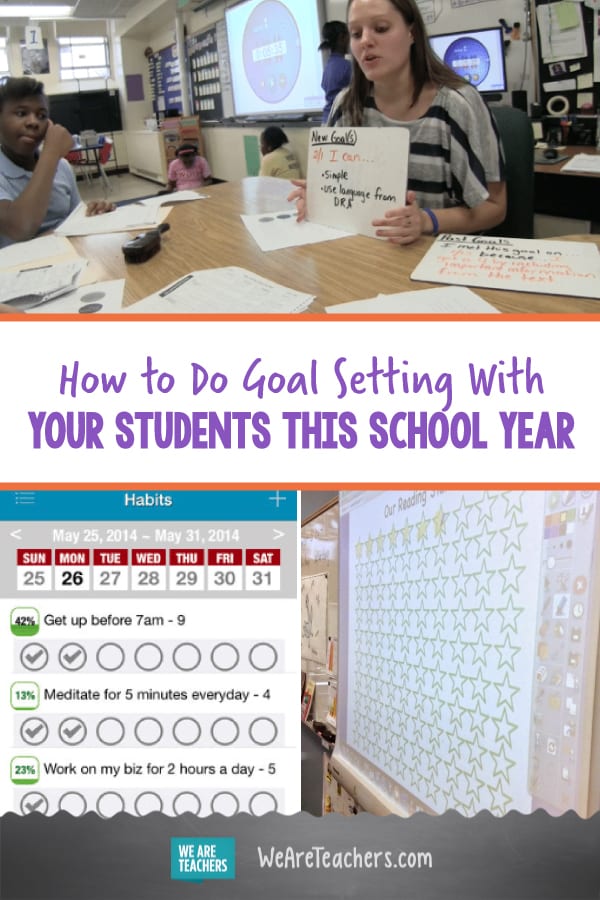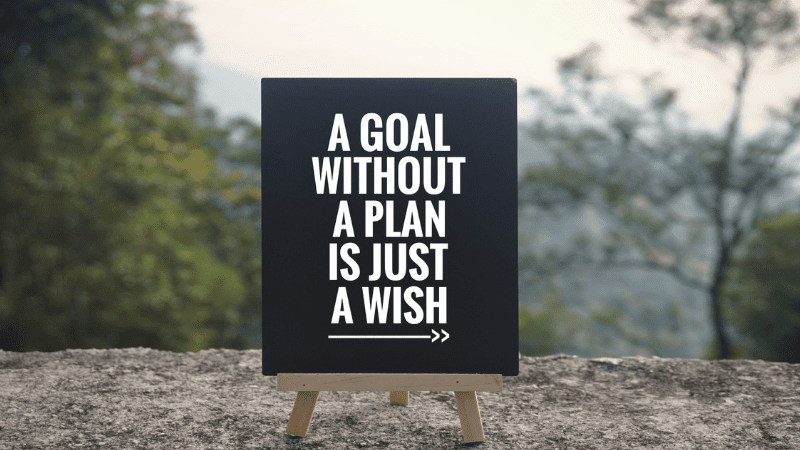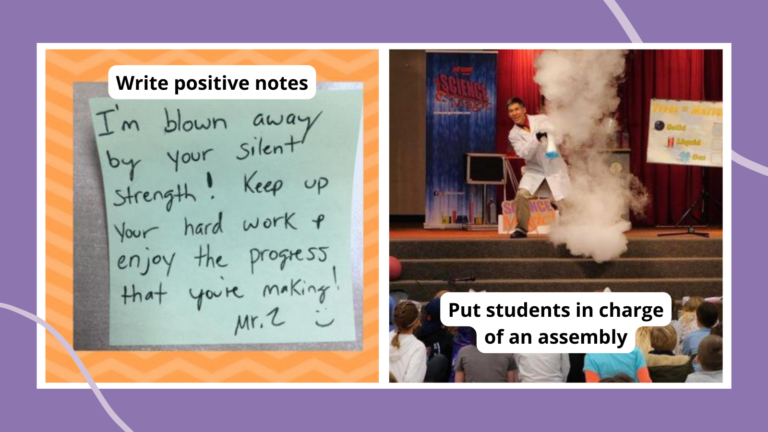As a teacher, you regularly think about goal setting for students. From improving skills and meeting standards to being kind and putting the darn caps back on the glue sticks, there’s always something to strive towards. Have you tapped into the power of setting goals with students, though? Research spanning decades shows that setting students goals improves both motivation and achievement. Goal setting encourages a growth mindset. It also supports the development of skills students need to be prepared for their future careers.
There’s no shortage of teachers doing innovative work around goal setting for students. We’ve compiled some of our favorite resources into this handy guide for you.
What is a goal, anyways?
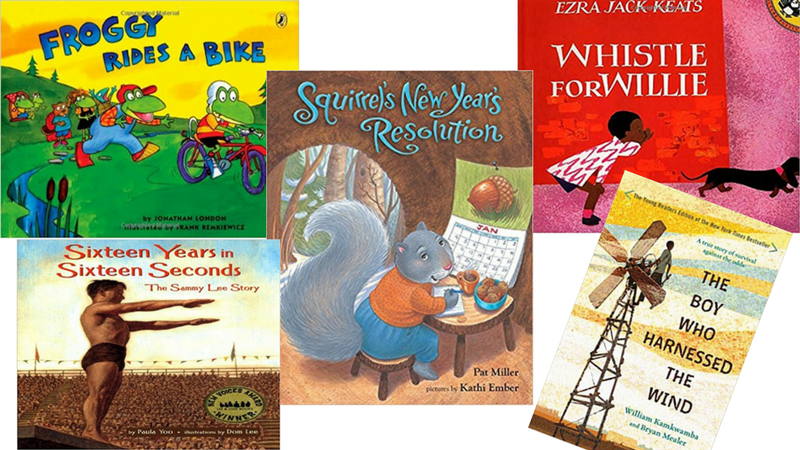
For younger students, you may need to start by distinguishing between a goal and a wish. I wish for a giant bowl of ice cream every evening around 8 PM, but my goal this year is to stay hydrated by drinking 100 ounces of water each day. Sigh. A read aloud like Froggy Rides a Bike by Jonathan London can help make this distinction clear. Froggy wishes he could own a cool trick bicycle, but his goal is to learn to ride a bike—which it turns out he’s able to achieve with persistence and despite a few classic “more red in the face than green” moments.
[contextly_auto_sidebar]
For all students, it’s helpful to share books that portray goal setting. In early elementary grades, Peter’s effort in Whistle for Willie by Ezra Jack Keats is a classic example of persistently working towards a specific goal. Squirrel’s New Year’s Resolution by Pat Miller presents a nice variety of goals, from learning to read to helping someone each day. However, upper elementary and middle school, The Boy Who Harnessed the Wind, Young Reader’s Edition by William Kamkwamba and Bryan Mealer chronicles William’s work to relieve his village from drought. It includes the sub-goals he works towards along the way, such as researching viable solutions and figuring out how to build a windmill.
A great picture book option for older students is Sixteen Years in Sixteen Seconds: The Sammy Lee Story by Paula Yoo. This title is a biography of a diver who set and reached many goals, both physical and academic, along the way to becoming an Olympian.
Be SMART about it
Helping students hone their goal setting skills makes it more likely they will meet them. SMART goals have been a popular tool for years and many teachers have successfully implemented versions of this practice with their students. Consider these tactics:
Unpack the goal-setting process with students
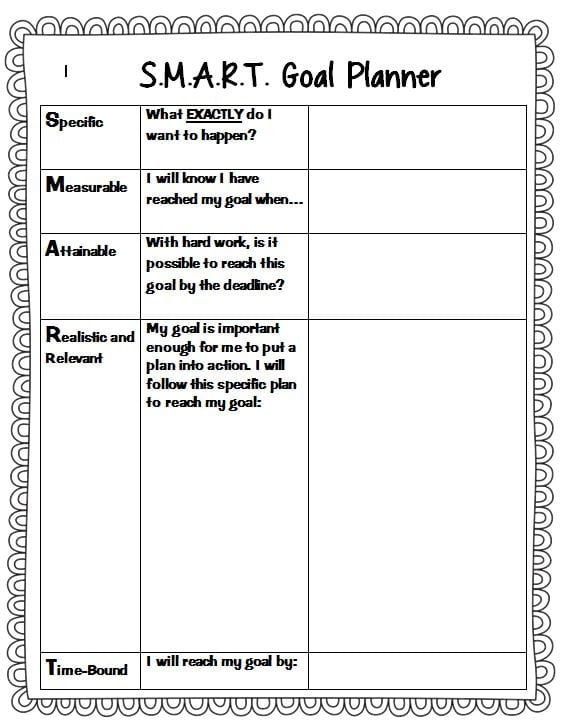
SOURCE: Scholastic Top Teaching Blog
This lesson plan from Scholastic includes a free downloadable poster and graphic organizer. We love the brainstorm activity and interactive whiteboard sort for distinguishing specific and vague goals. These could easily be adapted for younger students based on the examples you choose.
You can also check out our free goal-setting printable here.
Start small
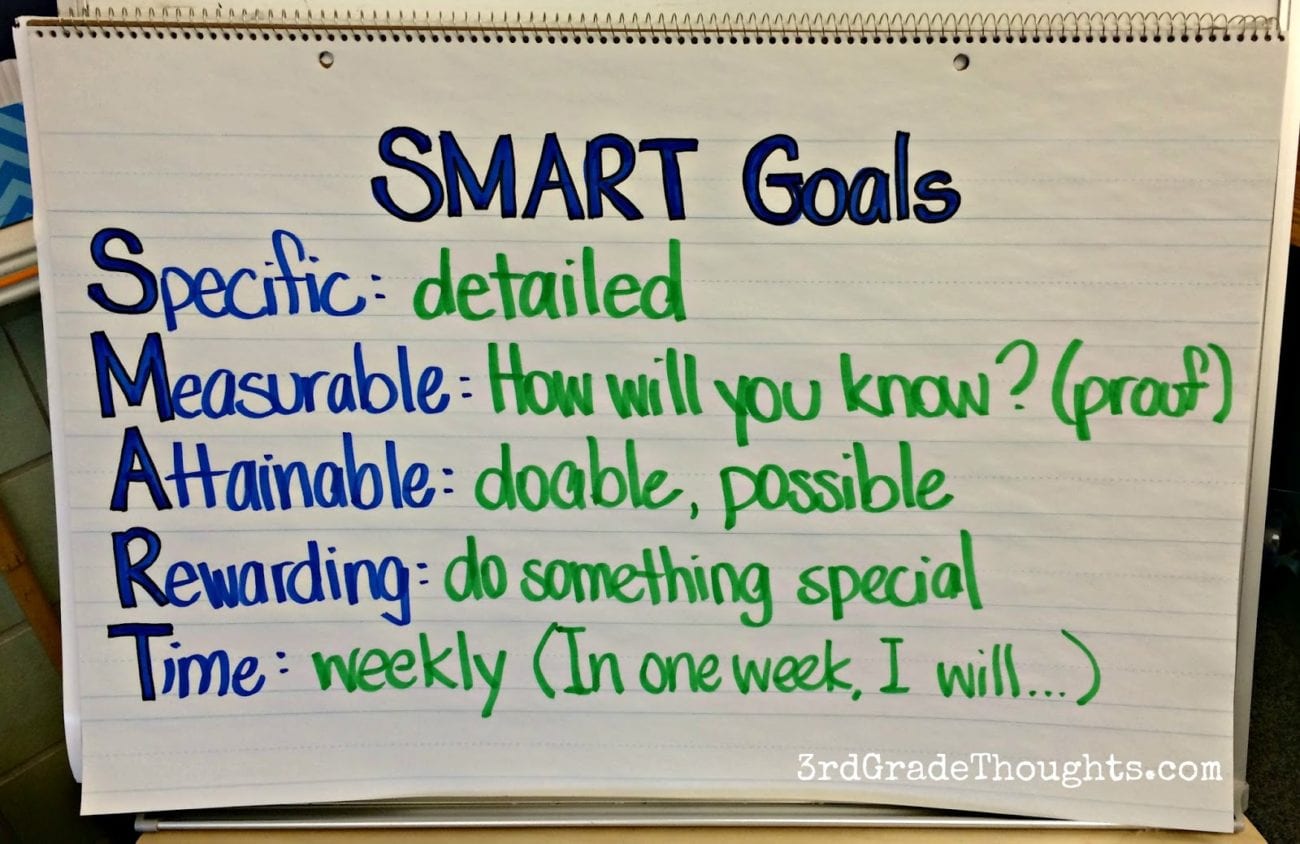
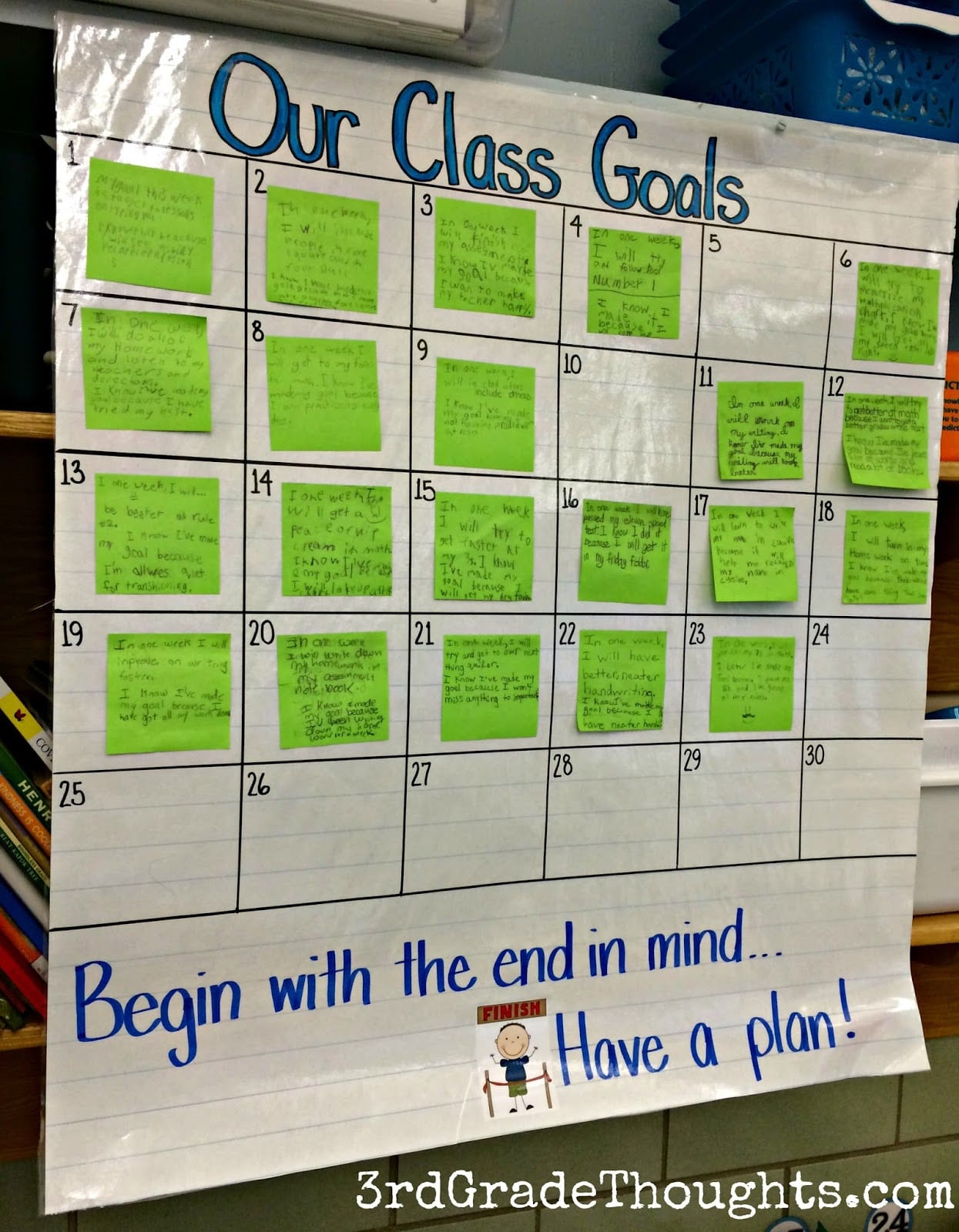
SOURCE: 3rd Grade Thoughts
This blog post from 3rd Grade Thoughts includes a simple-but-powerful anchor chart and a straightforward system for students to publicly identify short-term goals. Students in this classroom work on “WOW goals” to be completed “Within One Week.”
Encourage nonacademic goals, too
In this lesson plan about character-based goals, students work with partners to discuss goals related to specific virtues such as respect, enthusiasm, and patience. They make specific plans to upgrade their behavior and evaluate their own progress.
Don’t stop now: keep track and reflect
Raise your hand if you sometimes add items to your to-do list just for the satisfaction of crossing them off. Progress monitoring systems are motivating, and they are a crucial component of goal-setting work. Consider:
Visual tracking systems
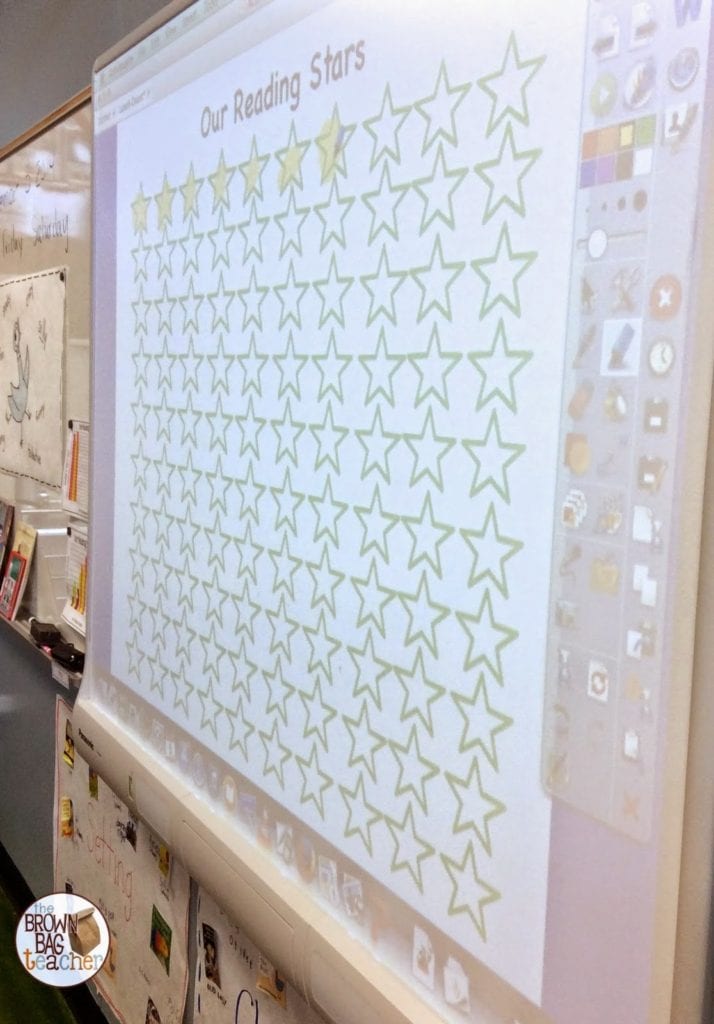
SOURCE: The Brown Bag Teacher
This post from The Brown Bag Teacher describes a star chart for keeping track of filled-out reading logs. This system displays progress in a concrete way and could easily be adapted to other goals.
Goal-setting apps
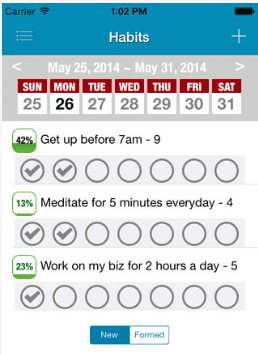
SOURCE: Goals on Track
There’s an app for that! This roundup of goal setting and tracking apps from Emerging Ed Tech gives you plenty of options for taking that to do list up a notch.
Sharing assessment data with students
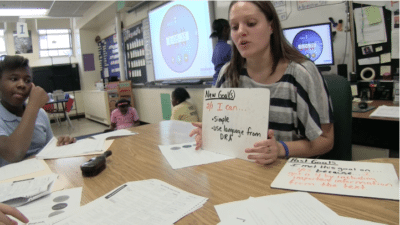
SOURCE: EL Education
This video from EL Education demonstrates how teachers can make the assessment data you’re collecting anyways more meaningful to students. This teacher discusses DRA data with students to help them reflect upon their progress and establish updated goals.
It’s time to celebrate!
Who doesn’t love a chance to be recognized for an achievement? Acknowledging students’ attainment of goals is an important component of classroom goal setting. Consider these ideas:
Make celebration a habit

SOURCE: ASCD
Nurture a “hooray” classroom culture by adopting the perspective of teacher Kevin Parr, who noticed an uptick in student motivation when he simply made a daily effort to provide more nonverbal and verbal recognition.
Recognize students in writing and in public
Send students “Happy Mail”, as described by Responsive Classroom. Use written awards or notes to give individualized and authentic positive feedback and publicly share them for added recognition.
Introduce fun classroom traditions
If your school allows balloons, we love Dr. Michele Borba’s suggestion to put small rewards—or reward “coupons”—inside balloons and write a goal on the outside of each one. Make a big deal out of popping a balloon when a goal is met.
How do you go about goal setting for students in your classroom? Come and share in our WeAreTeachers HELPLINE group on Facebook.
Plus, check out this goal-setting bulletin board kit.
